Ceiling lamps in the bedroom
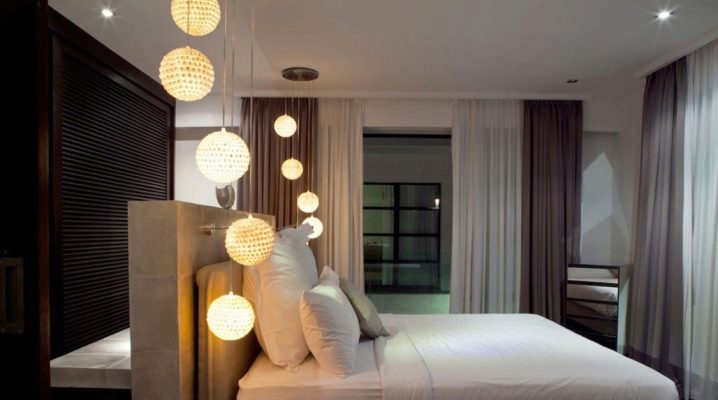
The correct organization of lighting in the bedroom is a guarantee of the health and good mood of the room's tenant. Our mood is 50% dependent on where we are. Therefore, it is important to make the lighting of the room as pleasant as possible. Ceiling lights play a very important role in the bedroom.

Lighting types
Lighting can be divided into four main types - depending on the purpose:
- General. Purpose - uniform distribution of the luminous flux throughout the room.
- Local (local) type - responsible for the flow of light in a specific area.
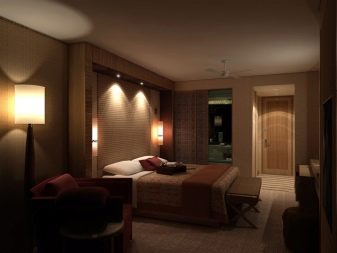
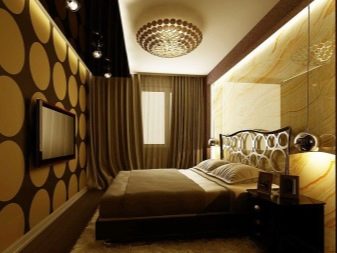
- Work lighting. Required to illuminate the working area: office, table, cabinet, mirror.
- Decorative. It emphasizes the allocated space in the bedroom, provides romance, adds mystery and beauty to the interior.
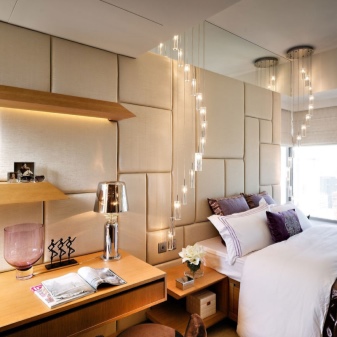
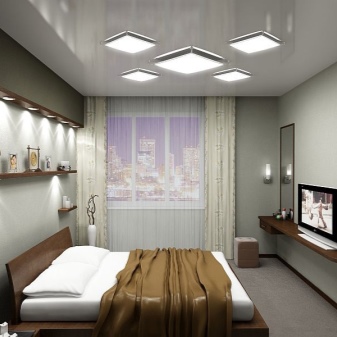
Varieties of chandeliers
Chandeliers mounted to the ceiling can be divided into two types (by size):
- Suspended. The fastening of such chandeliers is carried out on cables or chains, since the dimensions of such lighting fixtures are quite significant. Such devices are used in rooms with high ceilings.
- Ceiling. They are distinguished by their compactness, they are attached to the ceiling. This is the most popular type of chandelier in everyday life.
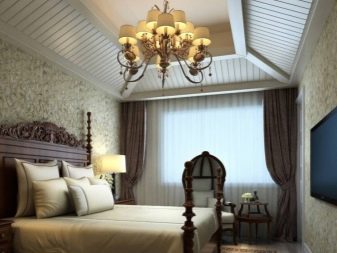
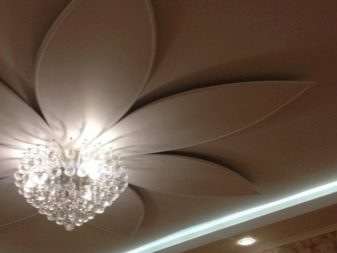
By style, chandeliers are divided into:
- Classic. Such elements are cast iron or bronze chandeliers. The plafond of such a device is made of glass. It can be white, tinted, colored. Crystal chandeliers are perfect for classic-style bedrooms. Such devices are multi-level, with mirrors or with a forged suspension. Crystal chandeliers for stretch ceilings are especially popular.
Ceiling options are located quite close to the surface of the ceiling, due to this, glare from the canvas is created and the space of the room expands.
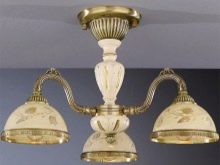
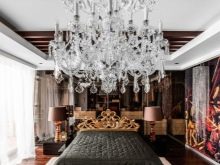
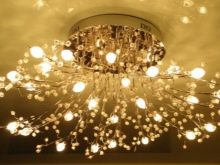
- Modern style. Such chandeliers are compact and simple, they lack various tricks. Smoothness and symmetry are the trump cards of such devices.
However, some details that give some mystery are still present. For example, the colored glass from which the shade is made will make the room truly fabulous.
The material from which such interesting devices are made is glass, as well as wood and metal. Products also differ in shape. These can be cones, pyramids.
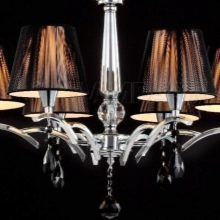

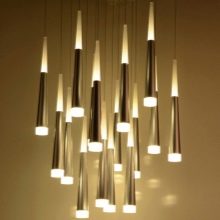
- Floristic type. The theme of making is usually vegetable: lilies, tulips, petals. In the manufacture of such lighting devices, materials such as glass, metal, crystal are used.
The color scheme of such chandeliers is varied: pink, beige, blue, golden, purple or white tones. Flower petals can be decorated in a variety of shades, green is more often used.
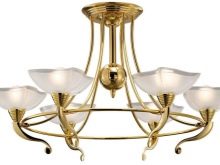
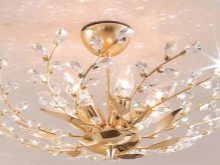
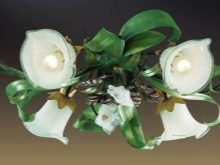
- Fabric option. This type of chandelier is used in almost all rooms. The features of such models include a variety of shapes and colors, original design, use in rooms with different heights, practicality and affordable price.
Most often, fabric chandeliers are made of dense material. This allows the luminous flux to be directed in a certain direction. The transparency of the fabric cover makes the rays scattered.

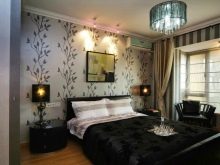
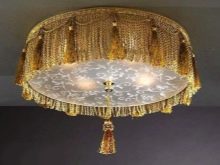
Rules for organizing the light flux in the room
There are a number of rules, the use of which guarantees the best distribution of light in the room:
- For small rooms to visually expand the space, a reflective finish is perfect - for example, wallpaper with a special coating.
- For large rooms, direct light fixtures are an excellent choice.
- To visually expand the space, a diffused lighting option is suitable.
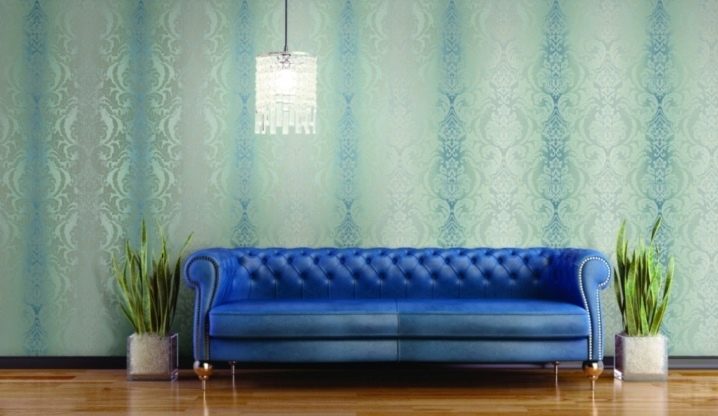
- You can visually raise the ceiling using wall sconces with an upward luminous flux. To visually lower the ceiling, it is necessary to use lamps with a downward flow of light.
- A narrow room can be expanded with the correct location of the hanging lights. By shifting them to one of the walls, you can achieve this effect. Luminaires located in the center, on the contrary, will give the effect of narrowing the space of the room.
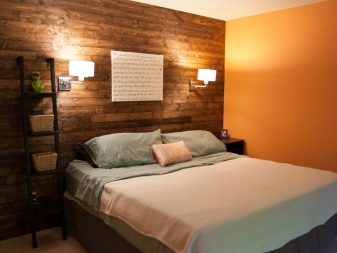
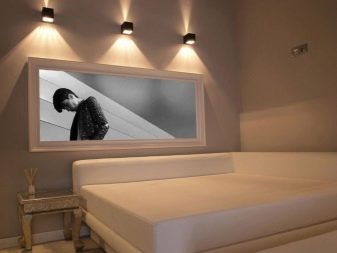
- To expand the space of cramped rooms, you can use a diode tape by passing it along one side of the bedroom.
- An elongated room can be easily made different thanks to the placement of side lighting. To draw out a short space, it is necessary to use a longitudinal stream of light.
- For bedrooms, it is important to distribute the light range in such a way as to create a play of halftones. An excellent option would be to distribute light to the ceiling using a chandelier with a diffusing flux.
You will learn about all the intricacies of lighting in the following video.
What will fit?
General lighting in such a room should not adversely affect the health of the human eyes. Therefore, the recommendations are quite simple: install the ceiling version of the chandelier with a matte finish. The shape can be cylindrical or spherical.

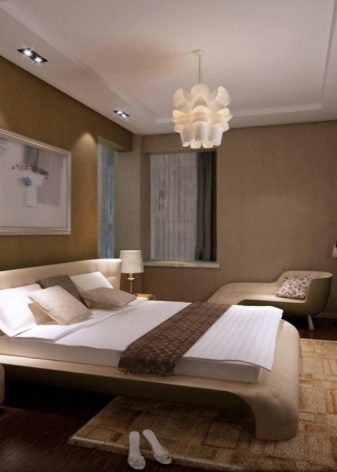
Do not use incandescent lamps: the luminous flux of such sources will be dim and harsh. Luminescent options negatively affect vision.
The best option would be to use halogen light sources. They are energy saving, durable.
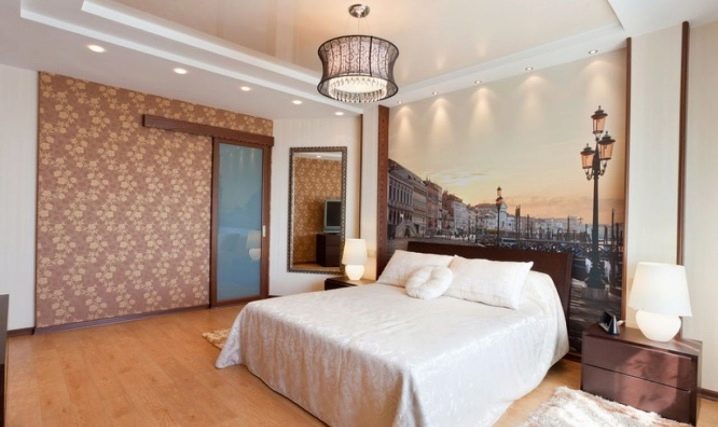
Power calculation
Here are the recommended power ratings for 1 m²:
- 12 W - use of incandescent lamps;
- 30-40 W - use of halogen lamps.
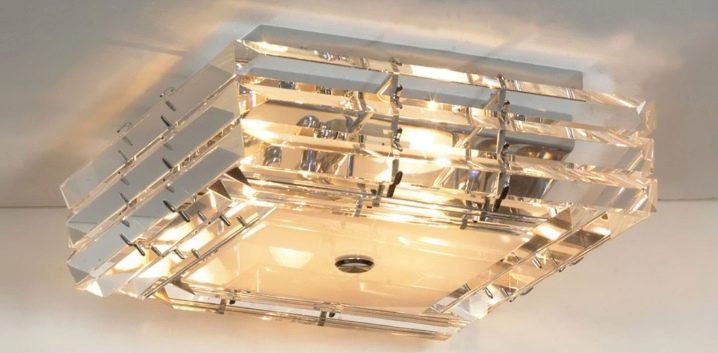
Adjusted for reflective surface
For a small bedroom (up to 10 m²):
- with dark wallpaper - 5 lamps with a power of 40 W each;
- with pastel-colored wallpaper - 4 lamps of 40 W each;
- with wallpaper in white tones - 2 lamps of 40 W, 6-8 halogen lamps, 50 W each.
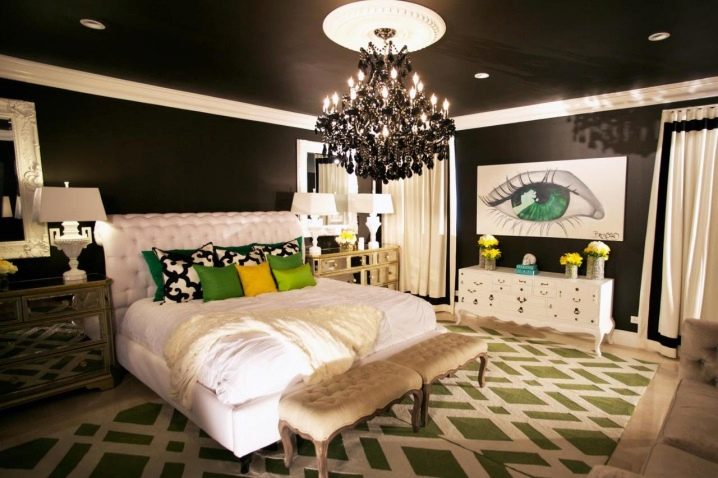
For bedrooms up to 15 m² (depending on the wallpaper):
- dark wallpaper - 7 lamps of 40 W each;
- pastel colors - 5 pieces, 40 W each;
- light - 3 pieces, 40 W each.
For a 20 m² bedroom:
- dark wallpapers - 9 pieces, 40 W each;
- pastel - 6 pieces;
- white - 4 pieces.
To adjust the luminous flux, it is recommended to install an adjustable switch in the bedroom.
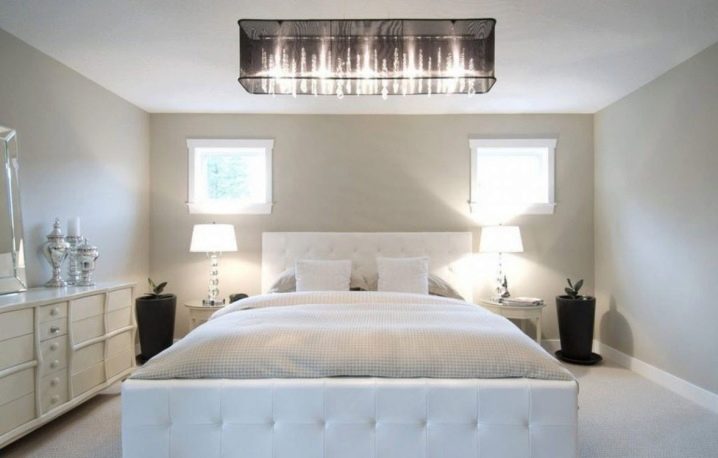
Additional recommendations
When choosing lighting fixtures for the bedroom, you should pay attention to the following points:
- Combinations in the interior. Achieving beauty is difficult enough. Any element of the bedroom should be combined with other items - this also applies to lighting fixtures.
- The size. This is also an important factor when arranging room lighting. For beautiful bedrooms of significant size, one lighting fixture will not be enough, you will have to buy additional light sources.
For smaller bedrooms, go for small chandeliers.
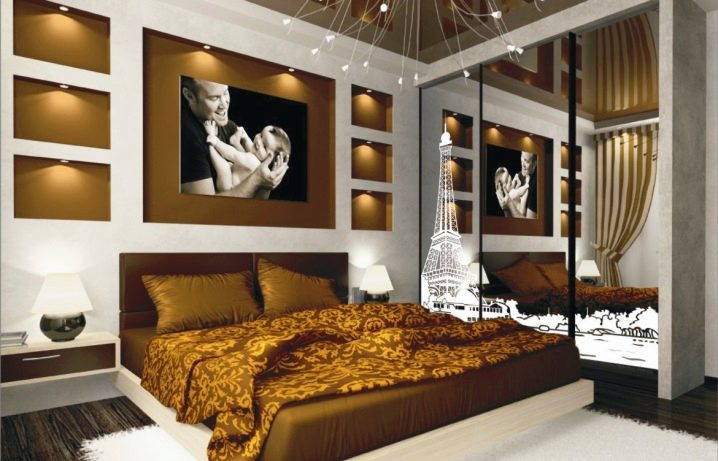
- For rooms that are divided into zones, luminaires that can change the direction and brightness of the light beam will become an actual choice.
- The height of the suspension of the lighting fixture is at least 2 meters from the floor of the room, so choose the hanging options as carefully as possible.
- Another trick is the adjustable shade. With its help, you can direct the flow of light to the desired part of the room.














The comment was sent successfully.